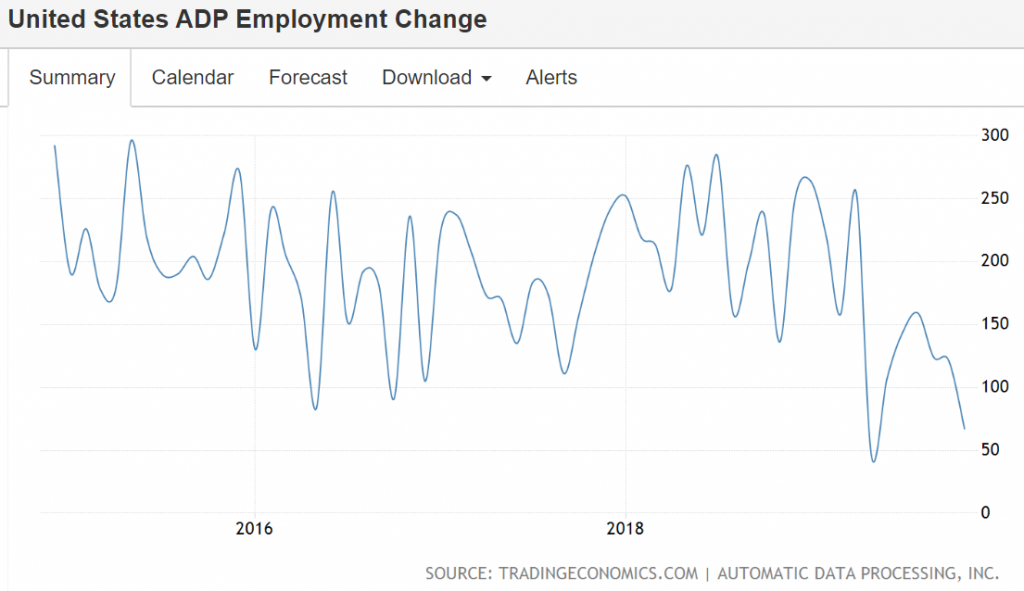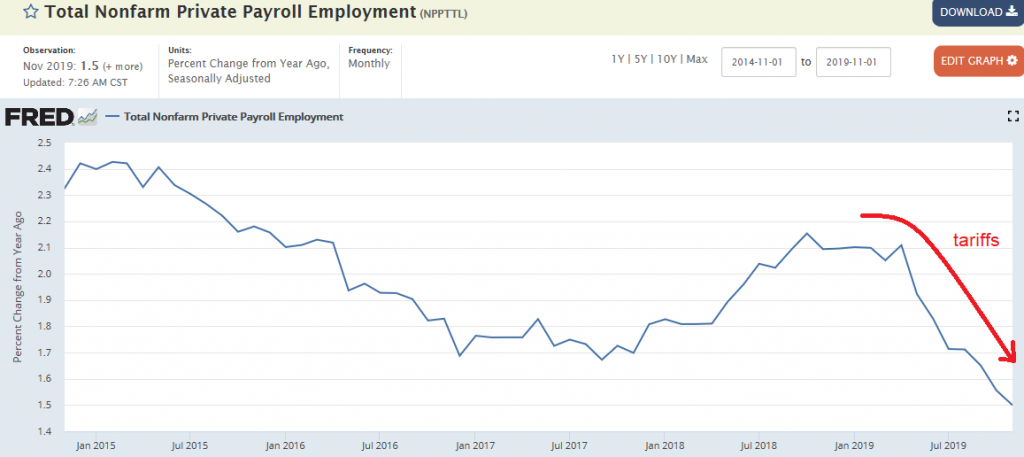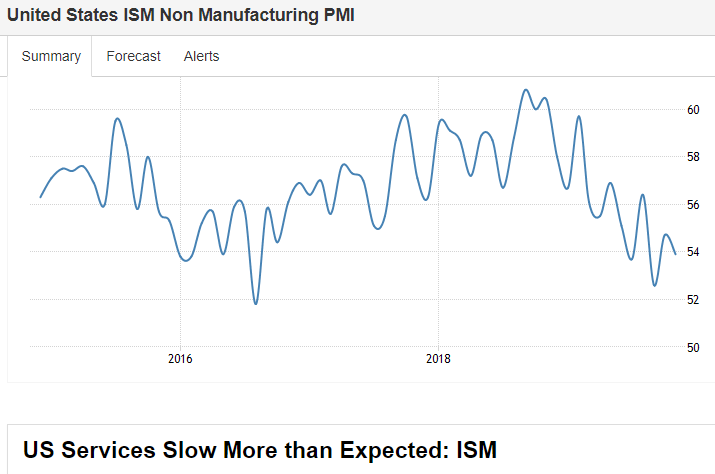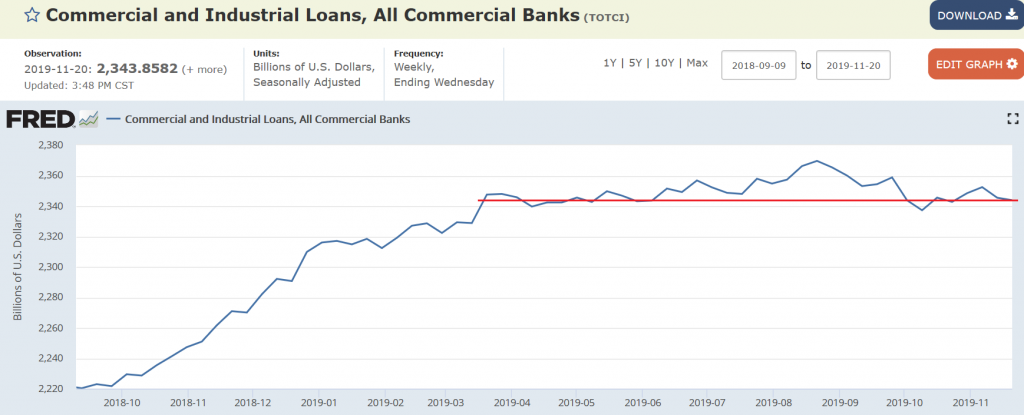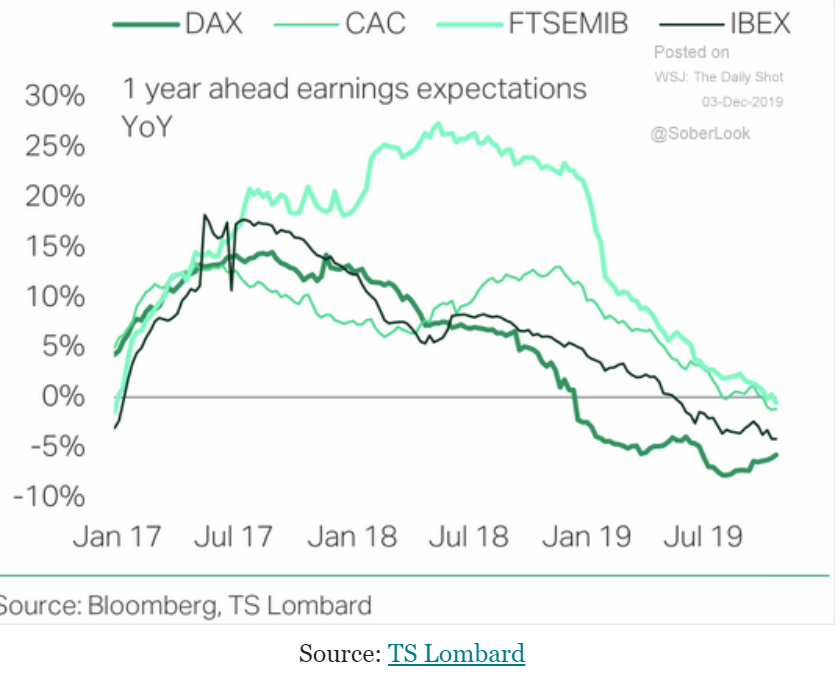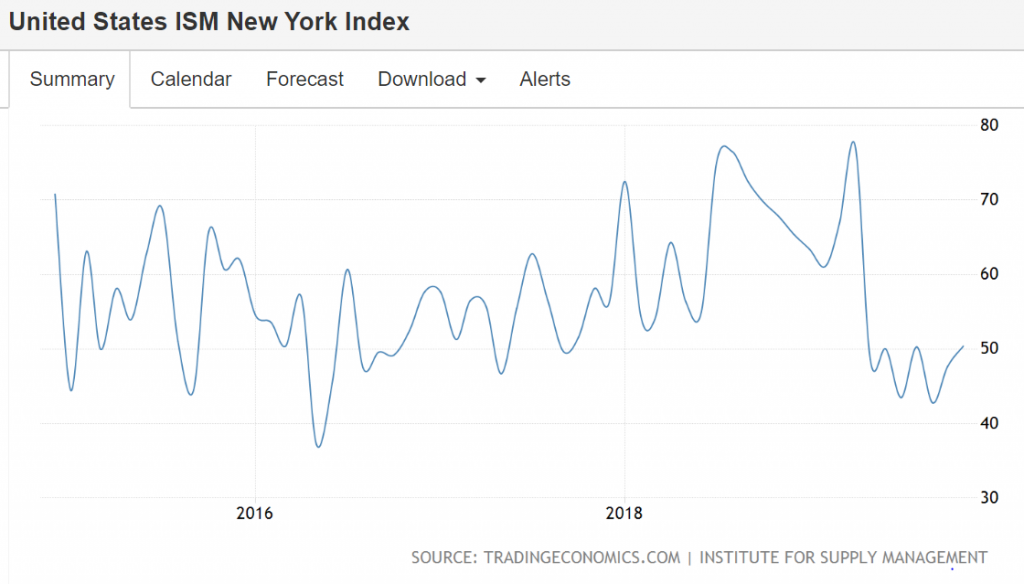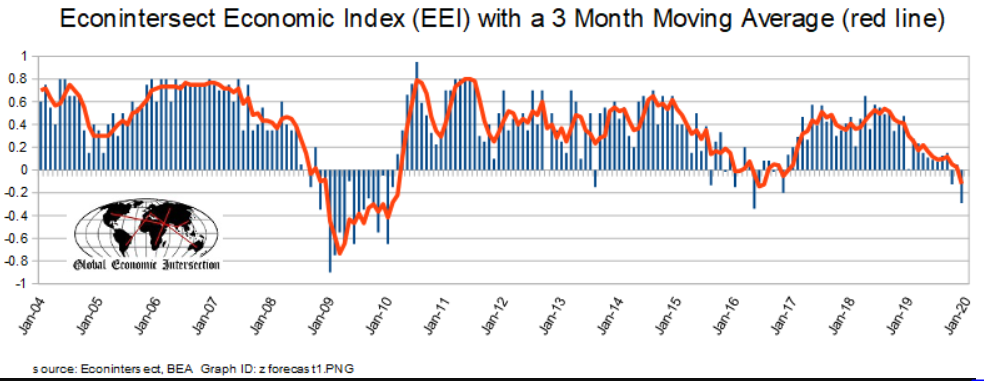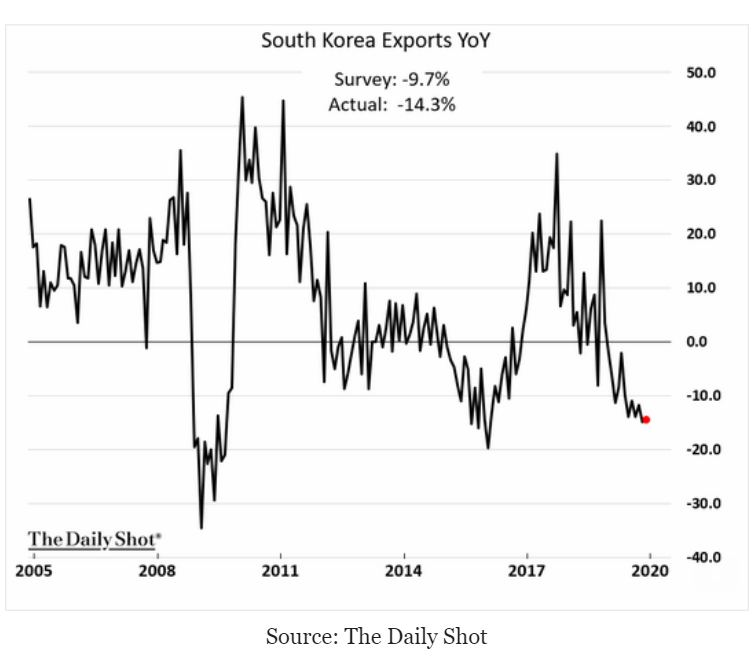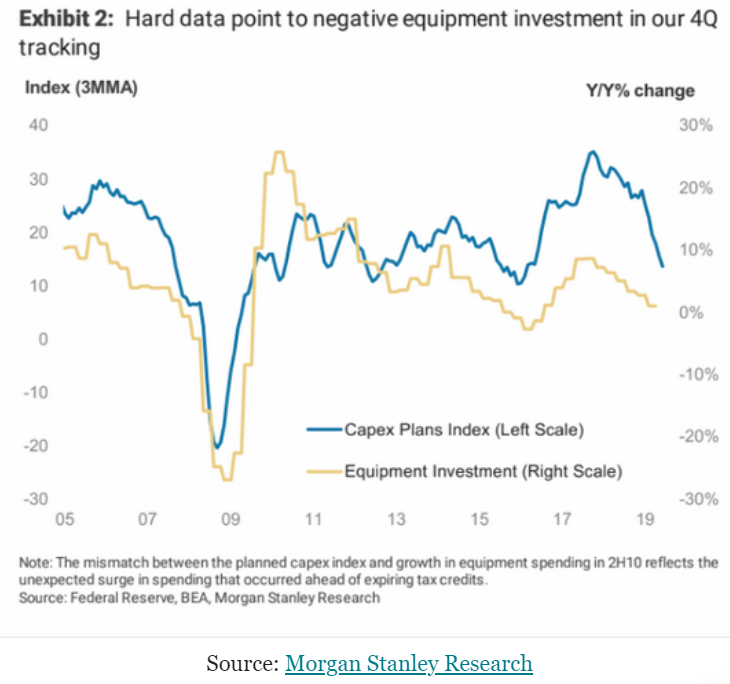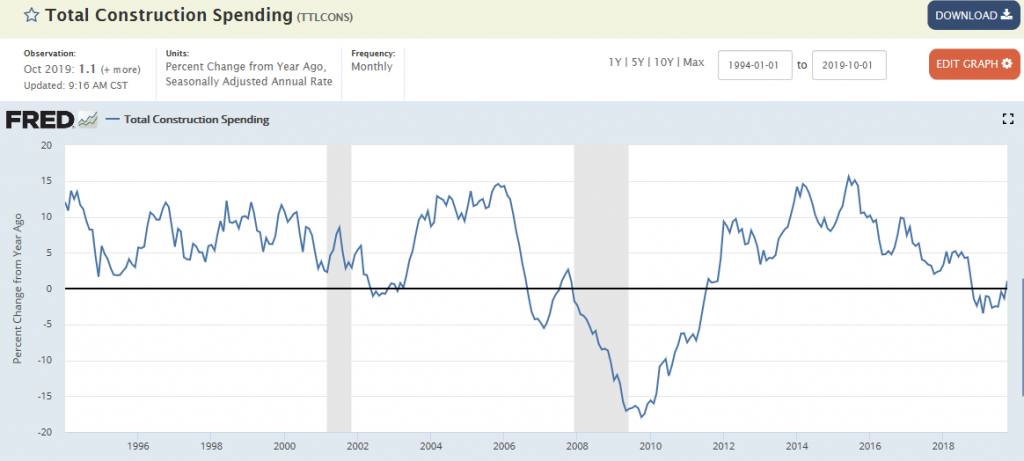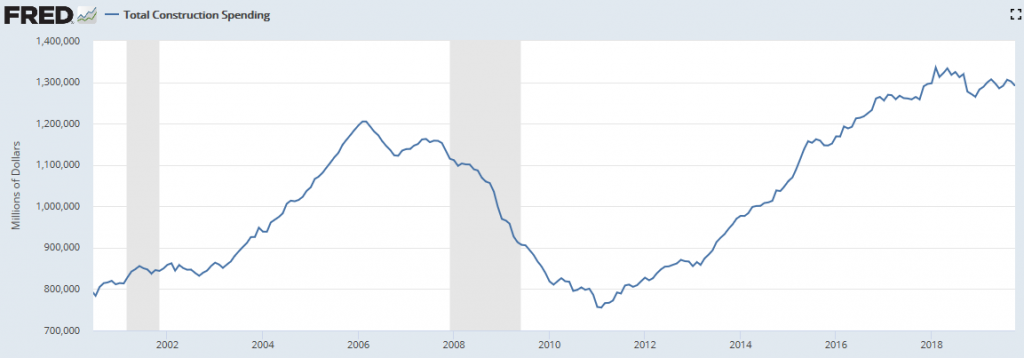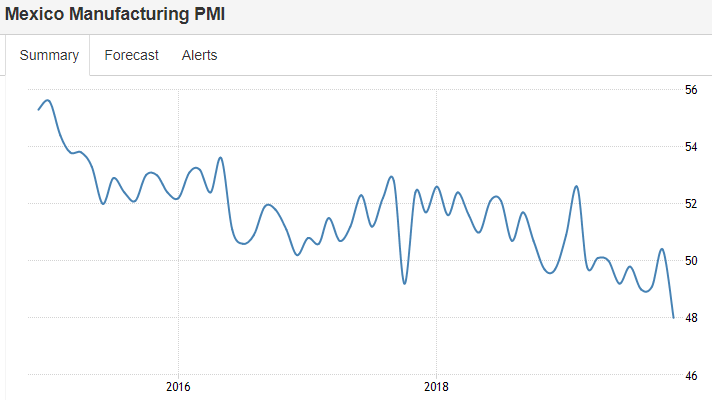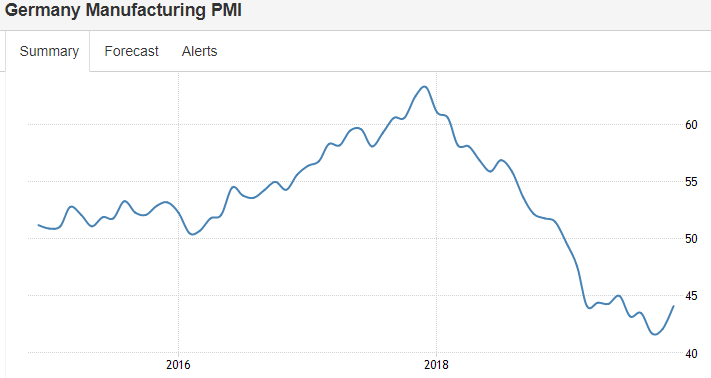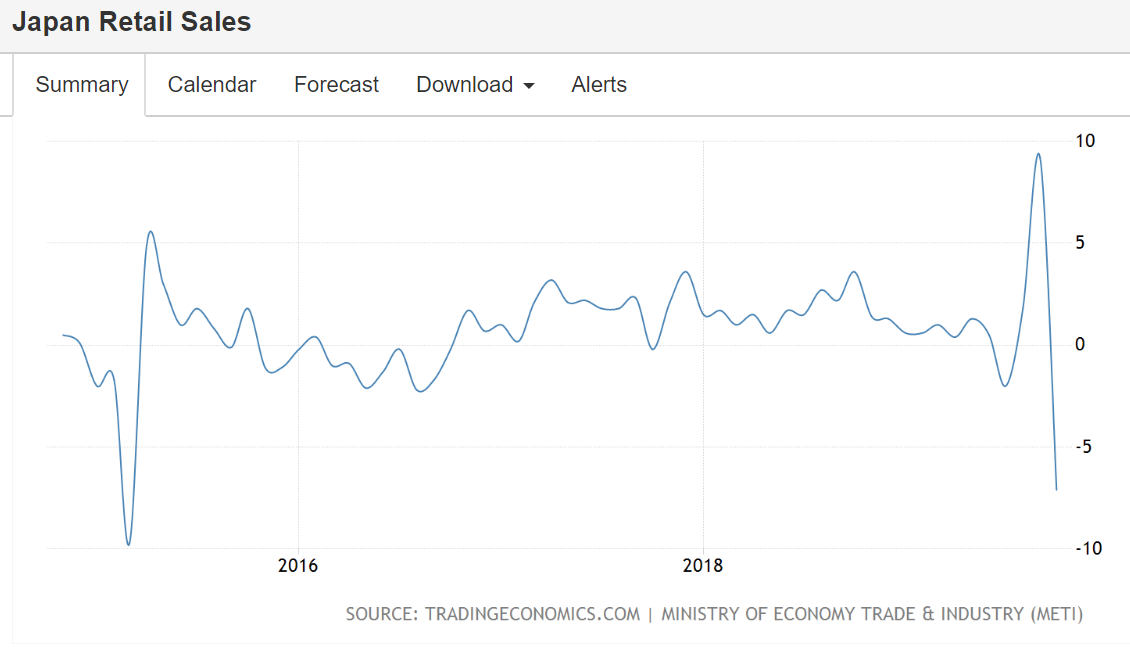The details show a weakening US consumer:
The US trade deficit narrowed to USD 47.2 billion in October of 2019 from a downwardly revised USD 51.1 billion in the previous month, and below market expectations of a USD 48.7 billion. It is the lowest trade gap since May of 2018. Imports slumped 1.7 percent to the lowest value in two years amid falling purchases of pharmaceutical preparations, auto parts, vehicles and cell phones Exports edged down 0.2 percent.
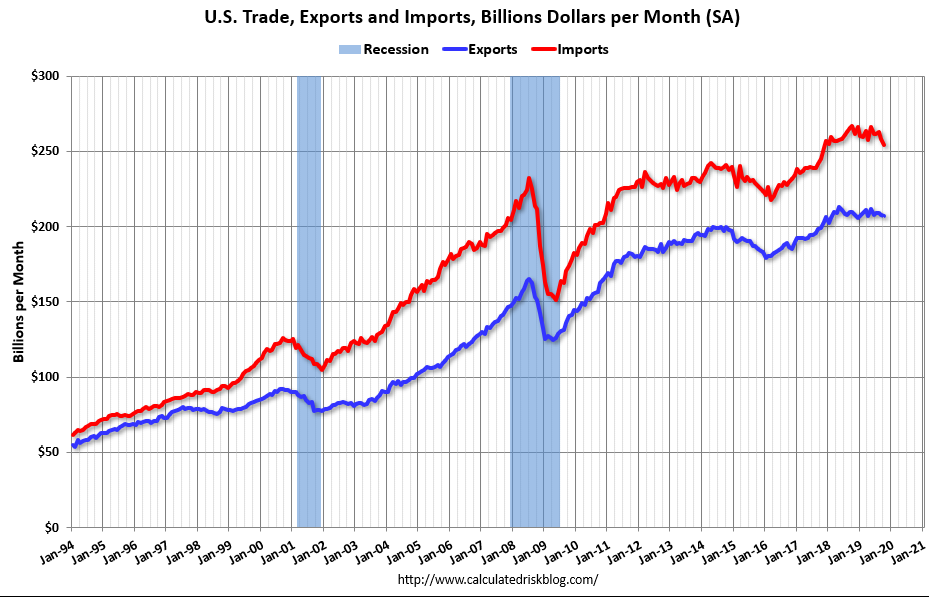
Still working their way lower:
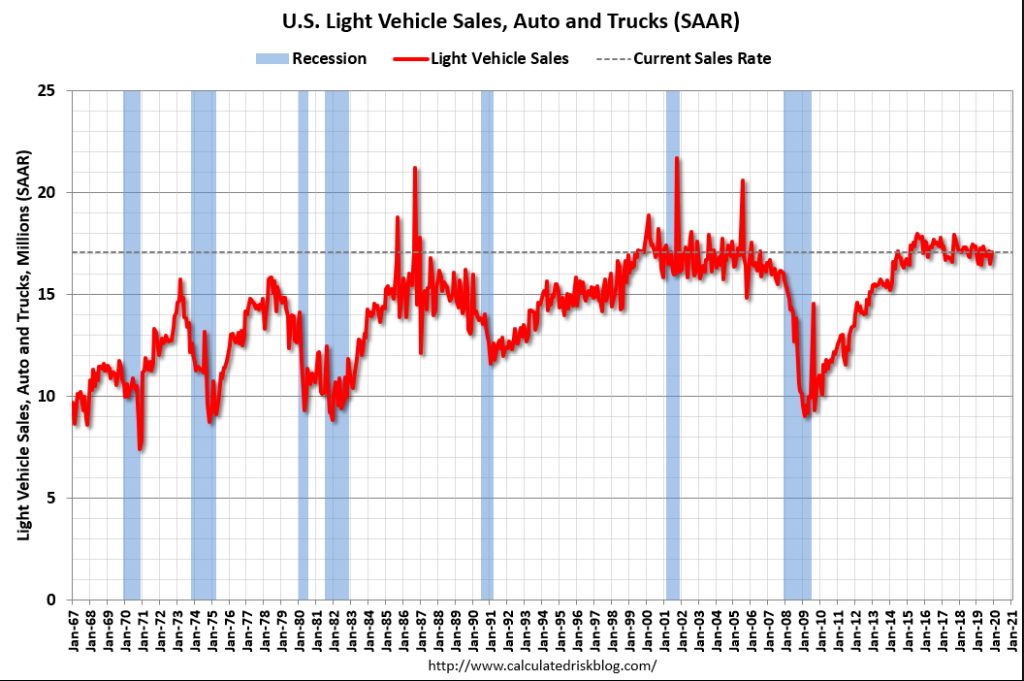
Air cargo industry braces for worst year since financial crisis as holidays fail to perk up demand

